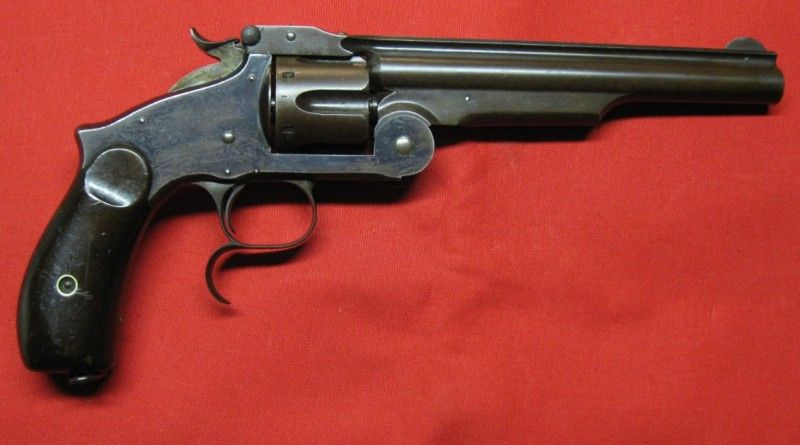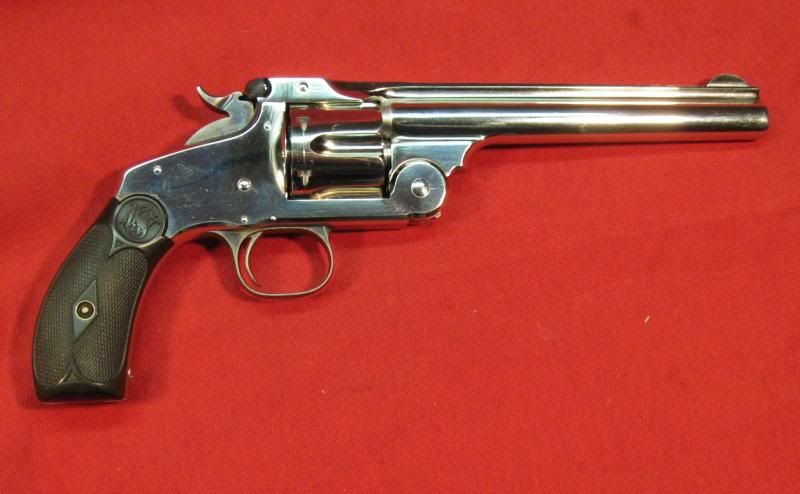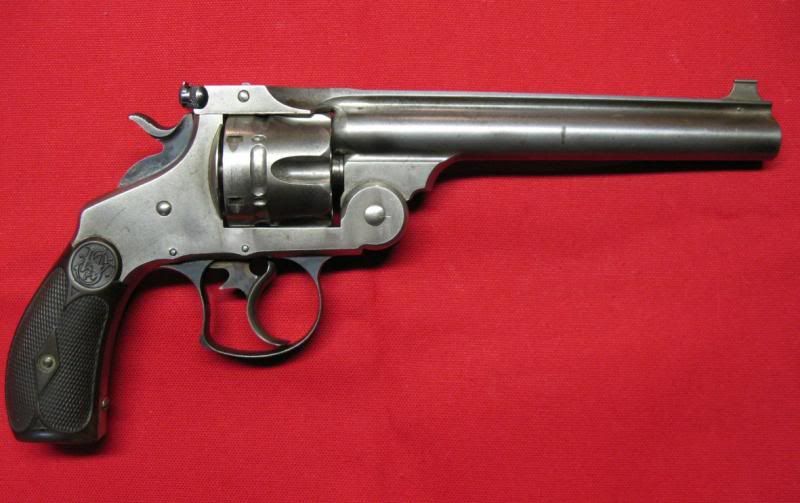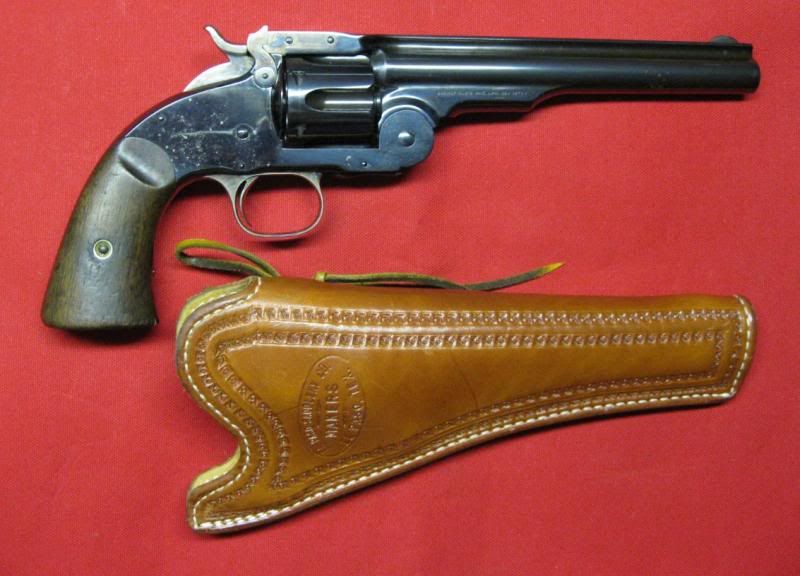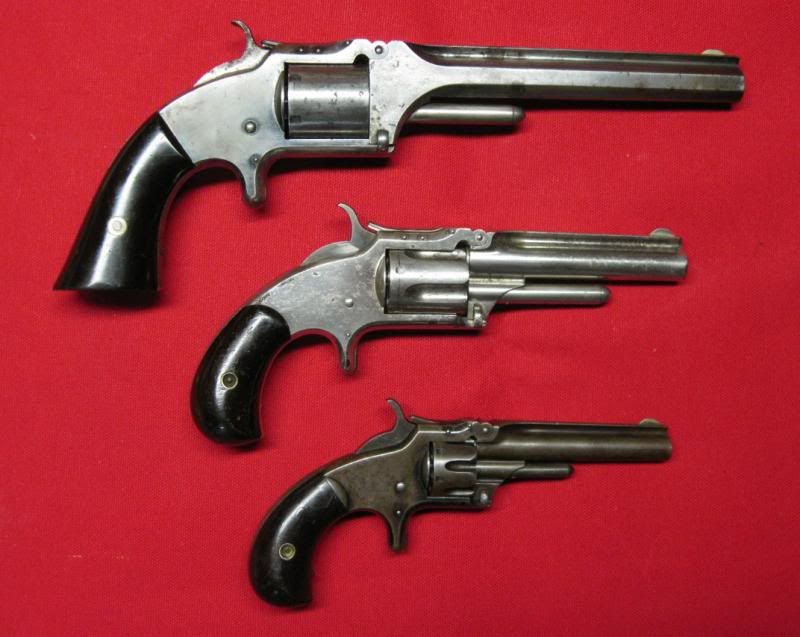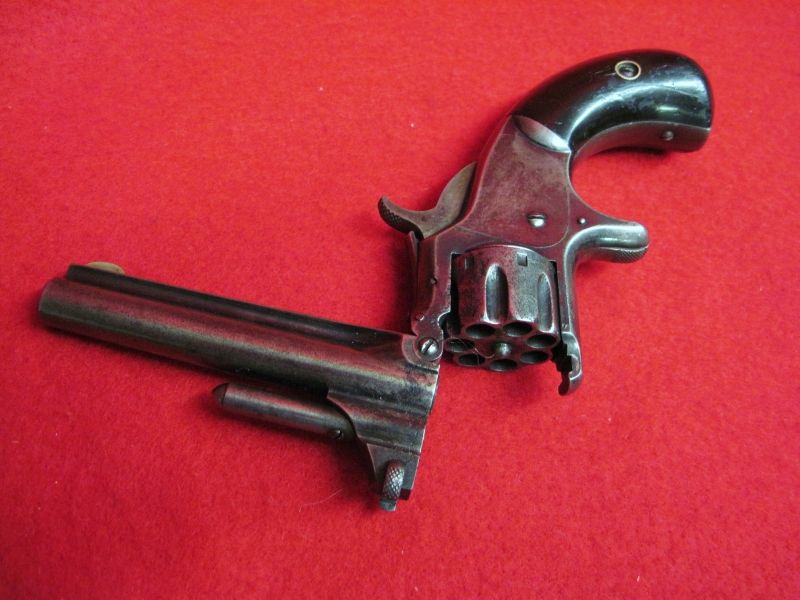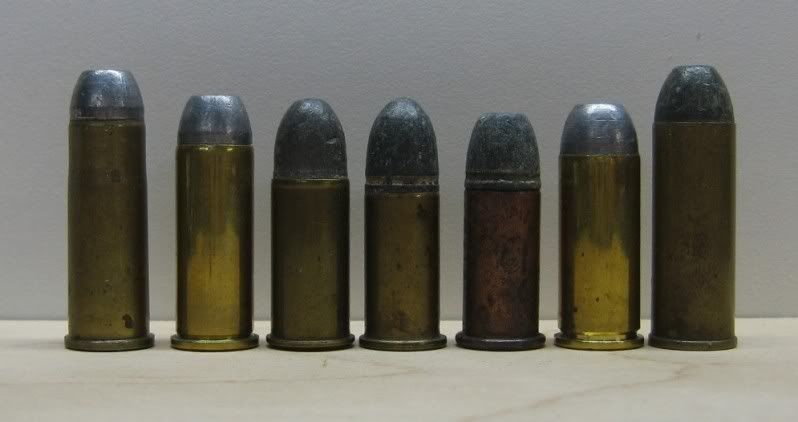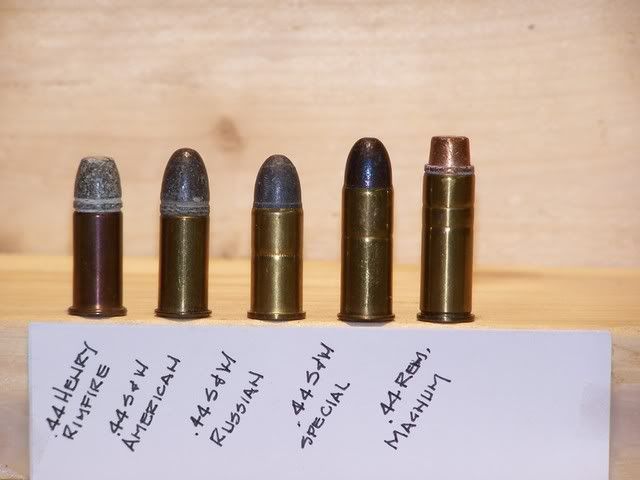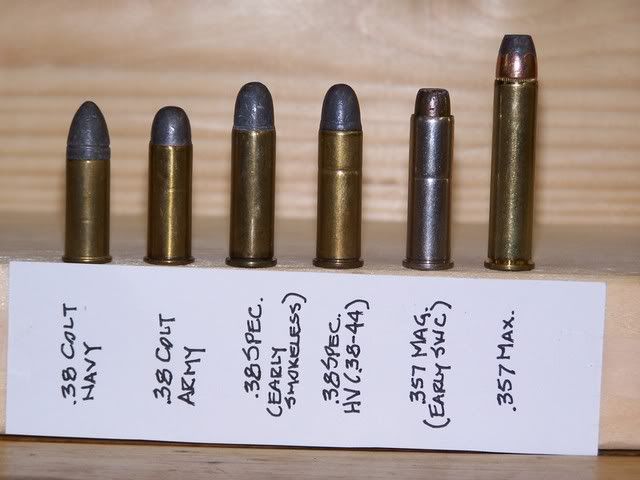Howdy Again
You are absolutely correct.
I did not mean to say that the photo of my 2nd Model Russian is the only way they looked, but it is the most common version. There were approximately 20,000 1st Models made. There were many more 2nd and 3rd Models made.
The First Model Russian (sometimes called the Old, Old Model Russian - yes, seriously), looked identical to the American Model. The only way to distinguish it from the American Model is to peer into the chambers.
The chambers in the American Model, were one diameter their entire length because they were chambered for the 44 S&W American cartridge, which employed a heeled bullet. The bullet was the same diameter as the outside of the case. The problem with heeled bullets was they carried their lubrication on the outside of the bullet, just like modern 22 RF ammo does. But with the old Black Powder ammo the bullet lube was soft and gooey and attracted dirt and pocket lint, not so good for the bore.
The Russians insisted on a bullet that carried its lube in grooves that were sealed inside the case, meaning the bullet diameter was the same as the inside of the case. This round became known as the 44 Russian round, the first of its type with the bullet the same diameter as the inside of the case, just about all centerfire ammo uses this scheme today. If you look carefully at my photo of the different cartridges, you can see that the 44 Russian bullet is smaller in diameter than the case, while the 44 S&W American round is the same diameter. Sorry, the bullet lube disappeared a long time ago. So the first change that the Russians insisted on was the configuration of the cartridge, which resulted in a chamber with a step to it for the smaller throat diameter and the larger case diameter. Which is how you tell a First Model Russian from an American, you look for the step in the chambers. Plus it probably has Cyrillic markings on it.
And all of this business is why '44' caliber cartridges today have .429 diameter rifling grooves.
When S&W entered into further contract talks with the Russians, for the 2nd Model, it is then that the Russians insisted on the characteristic 'knuckle', or hump at the rear of the grip and the unusual hook at the bottom of the trigger guard, both of which gave the 2nd and 3rd models their characteristic appearance. There has been much speculation about these unusual features over the years. One of the myths about the hook under the trigger guard is that it was a convenient place to hook the second finger for accurate shooting. I can tell you that that theory is baloney, it is much simpler to grip the gun like any other gun. There are other theories about the hook could be used to parry a sabre blow, or it made a convenient place to hang the gun from a belt or sash, both of which are also impractical. As far as the hump is concerned, there is speculation that it was to help control recoil. Again, I can tell you from experience that the only thing the hump does is make it more difficult to cock the gun one handed. It is much, much easier to cock the smoother shape of the Schofield or New Model Number Three. To cock the Russian, I have to regrip in order to reach the hammer spur, then regrip again to get my palm below the hump. If I fire without regripping again, the hump hurts like the dickens in recoil.
Personally, I think the Russians insisted on these features simply because they were common European pistol features of the day. The Russians installed an inspector, I can't bring his name to mind right now, at the S&W plant to inspect everything and make sure the guns were being made to their specifications.
The way to tell the latter two models apart is the longer ejector rod housing on the 2nd Model, and the large thumb screw on top of the top strap on the 3rd Model, which is how you remove the cylinder. For what it's worth, all the modern Italian replicas are replicas of the 3rd Model.
S&W identification can sometimes be a bit confusing. I recently handled a New Model Number Three that had the same hook under the trigger guard as the 2nd and 3rd model Russians. It was apparently a custom option.
As far as the S&W factory being close to the Armory, yes, the old Stockbridge Street location was about an 11 minute walk from the Armory. I frequent Springfield a few times a year for the biggest gun show in Mass. S&W built a new factory across town in 1949 and abandoned the old location.


